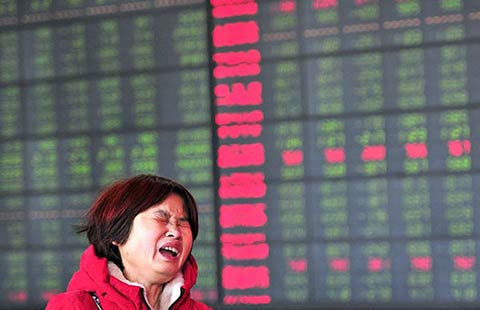Combined coal, wind power grid approved for national pilot program
By Yang Ziman and Yuan Hui (China Daily) Updated: 2015-12-30 10:12China's first regional grid to successfully integrate both coal and wind energy sources could be adopted elsewhere, said top executives of the company that operates the grid in Huolinhe in the Inner Mongolia autonomous region.
The dual-power electricity grid is the brainchild of SPIC Mengdong Energy Group Co Ltd, a subsidiary of State Power Investment Corp, which is the largest electrolytic aluminium manufacturer in Northeast China.
SPIC Mengdong Energy Group has been working for the past three years in Huolinhe, where one of the five largest open mines in China is located, to supply part of Huolinhe's domestic and industrial energy needs, mostly electrolytic aluminium production.
Now the central government has given the green light for the system to be used as the basis of a national pilot scheme, which could see it adopted in cities throughout the country.
A year earlier the highly successful "circular economic system" (meaning it is based on wind, coal and aluminum), was recognized with an innovation award at the World Climate Change Conference in Lima by the United Nations Framework Convention on Climate Change, China Alliance for Low Carbon Action, and the Environmental Defense Fund of the United States.
Accepting the prize, SPIC Mengdong Energy Group's Chairman Liu Mingsheng told the audience that the Huolinhe program had helped "improve the city's utilization of renewable energy".
"As we look for ways to optimize power distribution patterns through regional grids, a larger proportion of intermittent wind power can be consumed, and the efficiency of wind power utilization can be greatly improved."
The group uses the idea to power all its own aluminum production. "The biggest obstacle was that wind power fluctuates greatly depending on the weather," said Liu Jianping, SPIC Mengdong Energy Group's deputy manager.
"If the wind slows, it affects the aluminum production."
To solve the issue, the group adopted a "complementary coal-fired and wind-power system" which he said is able to counter-balance any suspension in wind-generated power by adjusting the wattage of coal-fired power and the rate of aluminum production.
"The price of electrolytic aluminum has halved from around 21,000 yuan ($3,230) per ton to the current 10,000 yuan per ton in recent years because of overcapacity," said Liu.
"But the incorporation of wind power into our energy mix has helped upgrade our production ability."
At full tilt, the company now estimates that its wind-power facilities could supply 38.3 percent of the aluminum production's energy needs.
Huolinhe's current wind power use is around 3,400 hours per year, more than twice of the average level or 1,600 hours across Inner Mongolia.
In the future, officials hope to eventually have wind power generate 85.6 percent of the aluminum production's energy needs, leaving just 15 percent generated by coal.
The local coal that is mined in Huolinhe is considered low quality, or lignitous coal, generating around 3,150 kilocalories' energy per kilo, against 7,000 kilocalories' energy per kilo for standard coal.
"This sub-standard coal has to be mixed with better-quality coal if it is used in cities, which reduces the efficiency of the good coal," said Liu.
"If stored, this lower-grade coal easily ignites by itself, and so its only effective use is for local power generation."
- Chinese shares close lower on final day of 2015
- Reforms key for internationalization of RMB
- China's 'supply-side structural reform' to solidify bedrock for sustainable development
- China will surpass US to become top consumer of Chilean wine
- 'Taobao village' on the move to deliver perfect holiday
- China's 'supply-side structural reform' to boost new economy
- How to win the tough battle of the structural reform
- Call for potent market supervision after tumultuous year

















